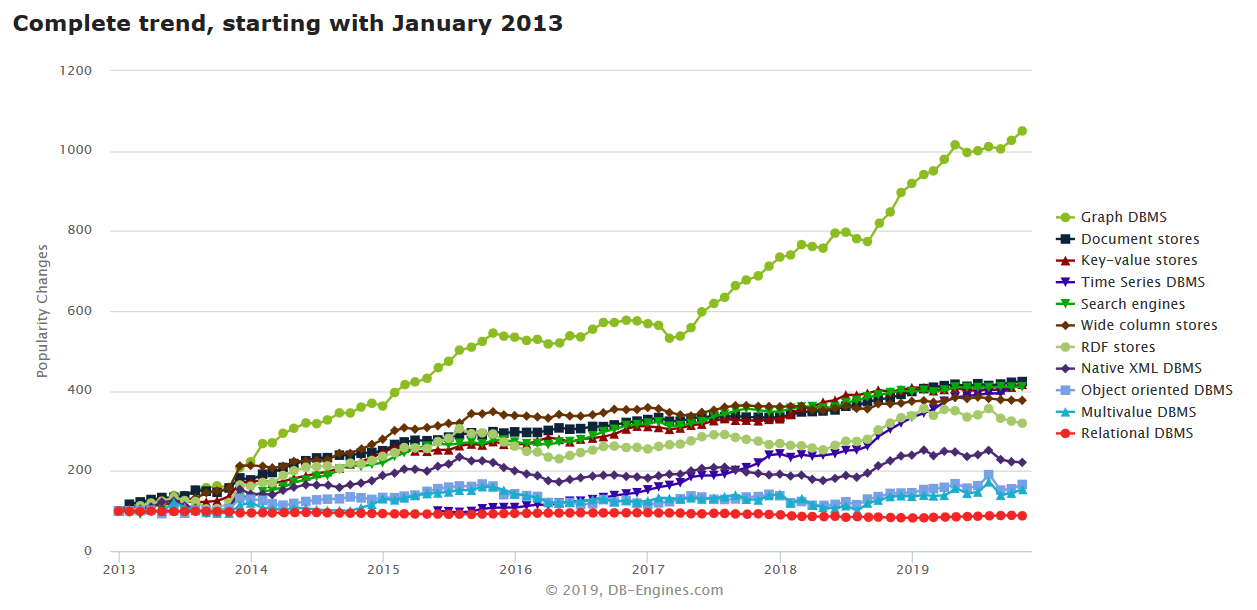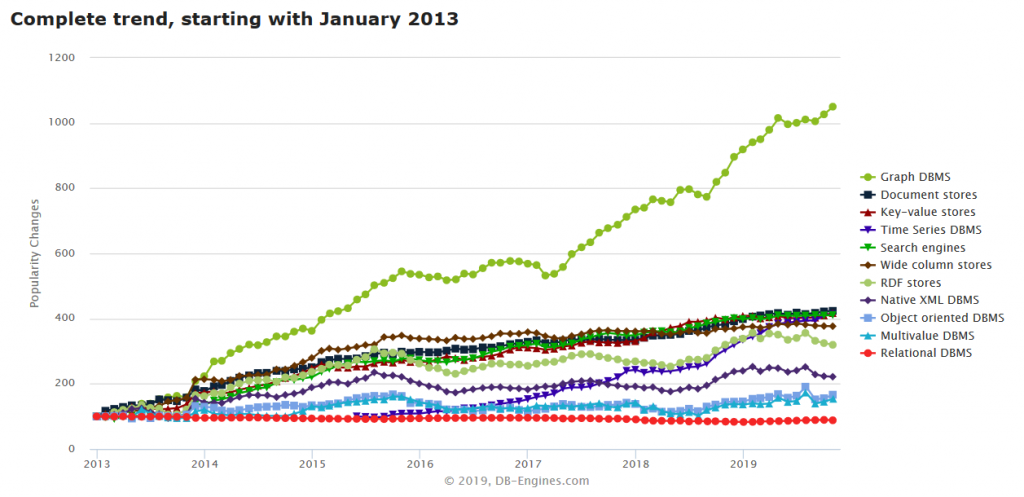If you have had the pleasure of attending a TerminusDB presentation, you might have heard something like this:
‘Unified, well-designed & refined data will be the jet fuel of future business’
Or this:
‘The value of AI will not be realized unless we feed enough relationship-rich data to machines’
We believe that the next generation of world-changing ideas will be powered by graphs. Graph databases, like TerminusDB, can do everything a relational database can do and then some. RDBMS are stable and feature rich with four decades of development under the belt; however, over time, DBMS will continue to drift towards graph. There will, of course, always be legacy systems hanging around doing useful stuff. We bump into plenty of pre-relational technology out here (especially MUMPS in the healthcare sector) and there are good reasons not to change things that work — ‘database migration’ sends shivers down the spines of even battle-hardened DBAs. In the years to come, new and innovative projects will be implemented on graph DBs.

The time to shift to graph is very much now. There is an explosion of the number of databases, companies and projects using graph and we see legacy systems trying to squeeze graph models into places they don’t belong (we see you Datastax and MySQL). Native graph technology is now sufficiently mature to deliver value; hardware has come on-stream (as TerminusDB is an in-memory DB, big machines with lots of main memory are important for truly massive graphs); and organisations now understand the value in processing large amounts of data.
We are database and data-ops people. In order to bring TerminusDB to life, we have poured years of high-intensity effort into building the database. Considerable innovation — both theoretical and practical — was required to get to this point. So we know how hard starting a project, an NGO, a company or anything else can be.
The truth is that we know about databases, but aren’t really so expert on other areas . Everywhere we look we see how data can be effectively applied to make the world better — we’re just not sure who will take the necessary steps. There is valuable, needle-moving data all around and it needs to be collected and queried effectively to make gains versus current standards.
If there is an area of human endeavor that is rich in data that is not being captured at present, there is a ripe opportunity to better understand. We are very aware of the possibilities in the area of research data — TerminusDB is the database behind ‘Seshat: the Global History Databank’, which seeks to systematically collect what is currently known about the social and political organization of human societies and how civilizations have evolved over time. When The Guardian recently ran a long piece about the project, some humanities scholars were vocally opposed to the very suggestion that data at scale could help us to understand the cycles of human history. We don’t agree. We think that there is a lot to learn — even about complex human systems — from organizing and querying large bodies of data.

Think about the movements of shipping containers, the efficiency of wind farms, the items in the supermarket or the output of salespeople. Where there is high volume, high activity data, there are serious questions to ask. If you can properly collect, store and query that data, you can try to recommend a next best action. The value of this recommendation will compound over time. With enough data in a big enough graph, you’ll start to see network effects and understand your world at scale.
Two industrial packaging plants next to each other. One has recorded data as a graph over many years and can query to see connections. The other fixes things when they break. The smart plant can start to predict with ever greater accuracy when things will stop working. Zero downtime is a massive and compounding advantage. One of these businesses will perform better over time.
Linked knowledge allows you to train machines in best way possible. In future, instead of pulling data to generate reports, you can push data in packaged insights to inform the next step. This cybernetic approach to knowledge work can remove a lot of drudgery by minimizing choice and maximizing focus.
Graph is the coming data model. The world will change, but some people haven’t seen it yet, so there is an opportunity. Unfortunately if you miss the data boat — it is difficult to catch up. The AI arms race is a zero sum game — those that use the data will win. We really, really want that to be the good guys.
We see a world full of opportunity, but can’t grasp it all. We call on startups, researchers, NGOs, government workers, factory operatives, hipsters, dreamers… anybody who thinks they can use data effectively to make the world a better place. TerminusDB is open source — released under the GPL v3 license — so there is no cost in using the database. We can offer you guidance, advice and encouragement. We believe that TerminusDB can offer value in a whole bunch of areas, and we want to help you realize that value. Join the data-centric revolution.cense
